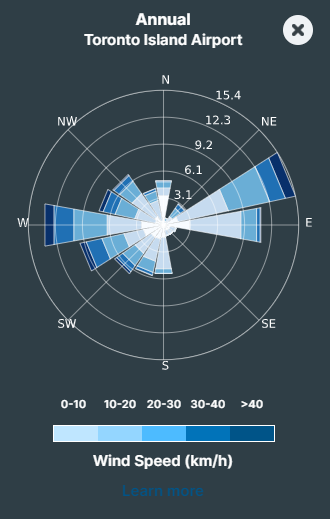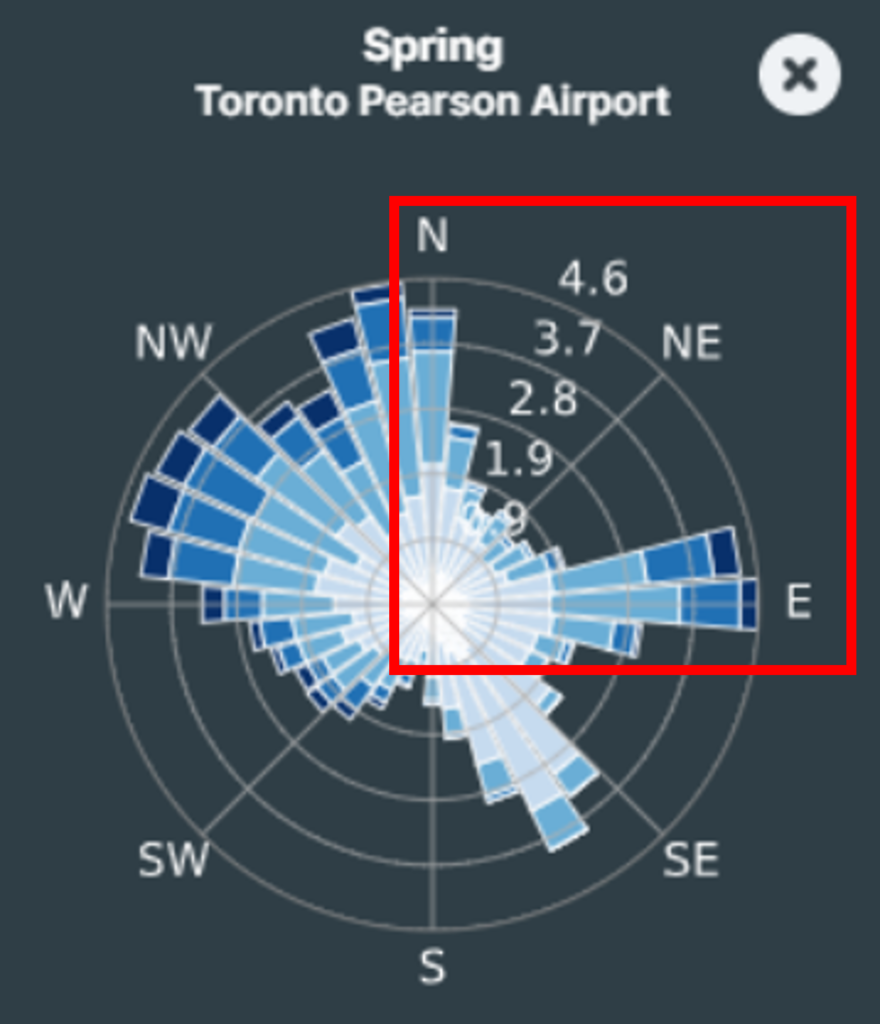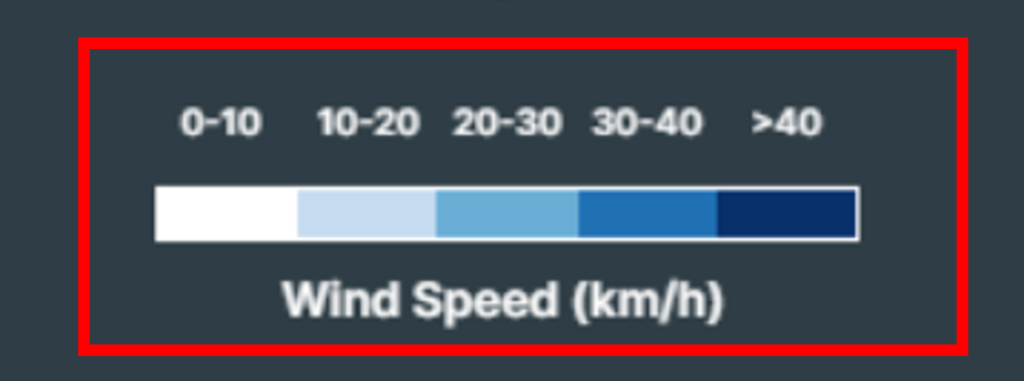Wind Roses are helpful tools which display wind speed and direction at a specified season and location.

What is it measuring?
The Wind Rose displays three types of information:
Wind direction (where wind is blowing from, not towards) is displayed in a compass configuration.
The shade of each ‘spoke’ of the wind rose indicates a range of speeds at which wind blows, based on the legend displayed at the bottom. For instance, winds blowing from a particular direction may typically be low-speed, but might occasionally become much stronger.
Finally, the radiating rings – and the accompanying numbers displayed with each ring – indicate how often wind blows from that direction at various speeds. This is shown as a percentage.

How to Read a Wind Rose
During the Spring season at Toronto Pearson Airport, wind blows from due East for a total of 4.6% of the season. These winds blow at:
0-10 km/h for ~0.5% of the season
10-20 km/h for ~1.2% of the season
20-30 km/h for ~1.8% of the season
30-40 km/h for ~0.8% of the season
40+ km/h for ~0.3% of the season.


From the southerly direction (see below), winds typically blow from the southeast. These SE winds are low-speed, typically blowing at 10-20 km/h, and do not exceed 30 km/h. Winds from the southwest – on the other hand – are far less frequent, but much more intense; when wind blows from the SW direction, they are typically above 20 km/h and sometimes exceed 40 km/h. Therefore, despite blowing less frequently than from the SE, these SW winds are considerably more impactful.